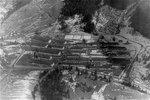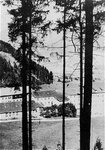lesofprimus
Brigadier General
Things listed on paper always tell a 1 sided story.... Stats are great and I love em.... But they arent everything....
And for the record, I have NEVER met someone who flew in the same airspace as those D9's and felt confident they were unbeatable.... The 4 or 5 guys i talked to who battled the Dora thought the plane superior in performance to their 51D's.....
But that is only 4-5 out of 1000???? But it's 100% of the pilots i talked to.....
First of all, I aint no liar and dont appreciate someone behind a computer screen accusing me of being one.....
Secondly, U DONT KNOW EVERYTHING!!!!!!!!!
Thirdly, opinions are like assholes....... Everybody's got one.....
And forthly, Colonel Henry Brown of the 355th is one of the men I've spoken to.....
And for the record, I have NEVER met someone who flew in the same airspace as those D9's and felt confident they were unbeatable.... The 4 or 5 guys i talked to who battled the Dora thought the plane superior in performance to their 51D's.....
But that is only 4-5 out of 1000???? But it's 100% of the pilots i talked to.....
Are u implying that we are just making this up for the hell of it????Oh. Name one?
First of all, I aint no liar and dont appreciate someone behind a computer screen accusing me of being one.....
Secondly, U DONT KNOW EVERYTHING!!!!!!!!!
Thirdly, opinions are like assholes....... Everybody's got one.....
And forthly, Colonel Henry Brown of the 355th is one of the men I've spoken to.....






